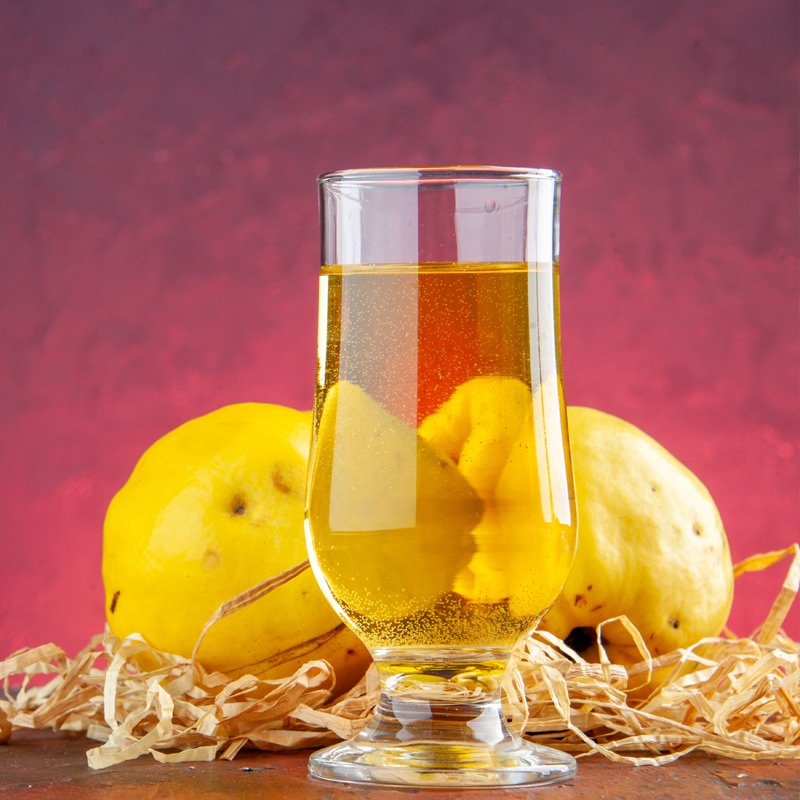
100 gr |
-- |
|
|---|---|---|
| Carbohydrate (gr) | 15.04 |
4928.47 |
| Protein (gr) | 3.59 |
1176.23 |
| Fat (gr) | 12.46 |
4083.43 |
| Fiber (gr) | 1.36 |
445.97 |
| Cholesterol (mg) | 14.64 |
4795.8 |
| Sodium (mg) | 325.27 |
106557.75 |
| Potassium (mg) | 392.16 |
128471.4 |
| Calcium (mg) | 78.15 |
25603.27 |
| Vitamin A (mg) | 46.04 |
15084.01 |
| Vitamin C (mg) | 6.16 |
2019.31 |
| Iron | 0.62 |
203.1 |
Quince is a fragrant and flavorful fruit from the pear and apple family, resembling a yellow apple or pear in appearance. Its taste is also somewhat similar to that of an apple, but quince has a dry, firm texture with a unique sweet-and-tart flavor profile. While quince can be eaten raw, it is most commonly enjoyed cooked—in jams or in savory dishes such as stews. Like apples, quince produces pectin when cooked, which contributes to its firm texture and is useful in preserving its shape when prepared in recipes.
In 100 milliliters of quince juice, there are approximately 42 calories.
Quince is rich in vitamins A, B, and C, as well as sugars and pectin. The ripe fruit has a neutral, balanced nature, while the seeds, known as "quince seeds," are considered to have a cool and moist quality.
Benefits of Quince Juice